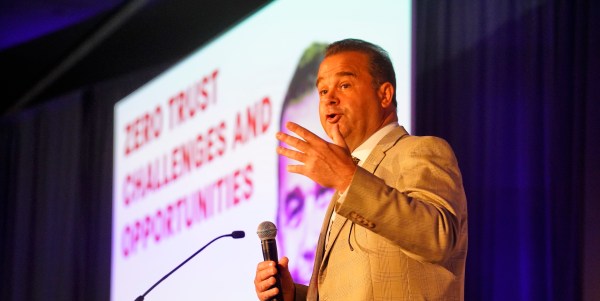
In the corner of his office, André Mendes has a framed portrait of some of the greatest players in Los Angeles Laker history, a fitting image considering he’s running the Broadcasting Board of Governors technology team like Magic Johnson leading the fast break.
We met with Mendes, the agency’s chief information and chief technology officer, at his C Street office where he tells us he is taking an aggressive approach in modernizing the agency’s IT, looking to bring the latest innovations in quickly and efficiently while creating one of federal government’s most technologically advanced agencies in the process.
“You can’t be afraid to take some risks,” Mendes says. “There are some people that are so risk averse they end up garnering the highest risks of all: obsolescence and ambiguity.”
That’s not the case with Mendes, a former professional basketball player in Europe who was the CIO and chief technology officer at PBS during the transition from analog to digital broadcasting and the Global CIO at Special Olympics before coming to the BBG in 2010, his first job within government.
The BBG is an independent agency of the federal government responsible for all non-military, international broadcasting sponsored by the U.S government.
In December, the agency migrated to a cloud e-mail system, upgrading from an obscure Sun offering to Microsoft Office 365. The migration was done in one weekend (just a week before Christmas, during a slightly slower time for the agency) with the following two weeks being used to clean up bugs. Almost 3,000 employees are now on the new system with only those located in remote international locations with very low-bandwidth still on the old system.
He also told us the agency has a mission critical data center in Prague that he is connecting to another here in the states via an NPLS network to become the disaster recovery site for the agency’s data here in the states and vice versa.
The agency is almost finished with a massive virtualization effort with 200+ servers already decommissioned and a goal to, excluding programs that are CPU intensive or don’t make sense to be on a virtualized system, make all of the agency’s servers virtualized by the end of this fiscal year.
Simultaneously, they are virtualizing the agency’s storage platforms. Mendes originally had eight platforms from eight different vendors and is now down to five with hopes to getting down to just three by the completion of their two year strategic plan launched in July 2010.
“In my opinion, this is the only way to do it,” Mendes said of the agency’s aggressive approach to bringing in new technology. “The beautiful thing with technology is that even if you start way behind, you can leapfrog past almost everyone without going through the same steps they did.”
So, how did he do this in a government that in the past has been known for long procurement cycles and different levels of authorization needed to push even simple projects through?
“For me it’s about how you sell it to folks and make them realize this is a joint effort where everyone benefits,” Mendes said. “You make it clear that doing these things will eliminate a lot of downtime, drive down midnight phone calls and decrease the workload, not to mention cut capital, operational and power costs. That freed up budget can then be used to invest in new platforms, creating a cycle of improved efficiency.”
“The thing to realize is that people are ready for change,” Mendes said, “and I tell them to jump on in. The water’s fine and time’s a wastin’.”




